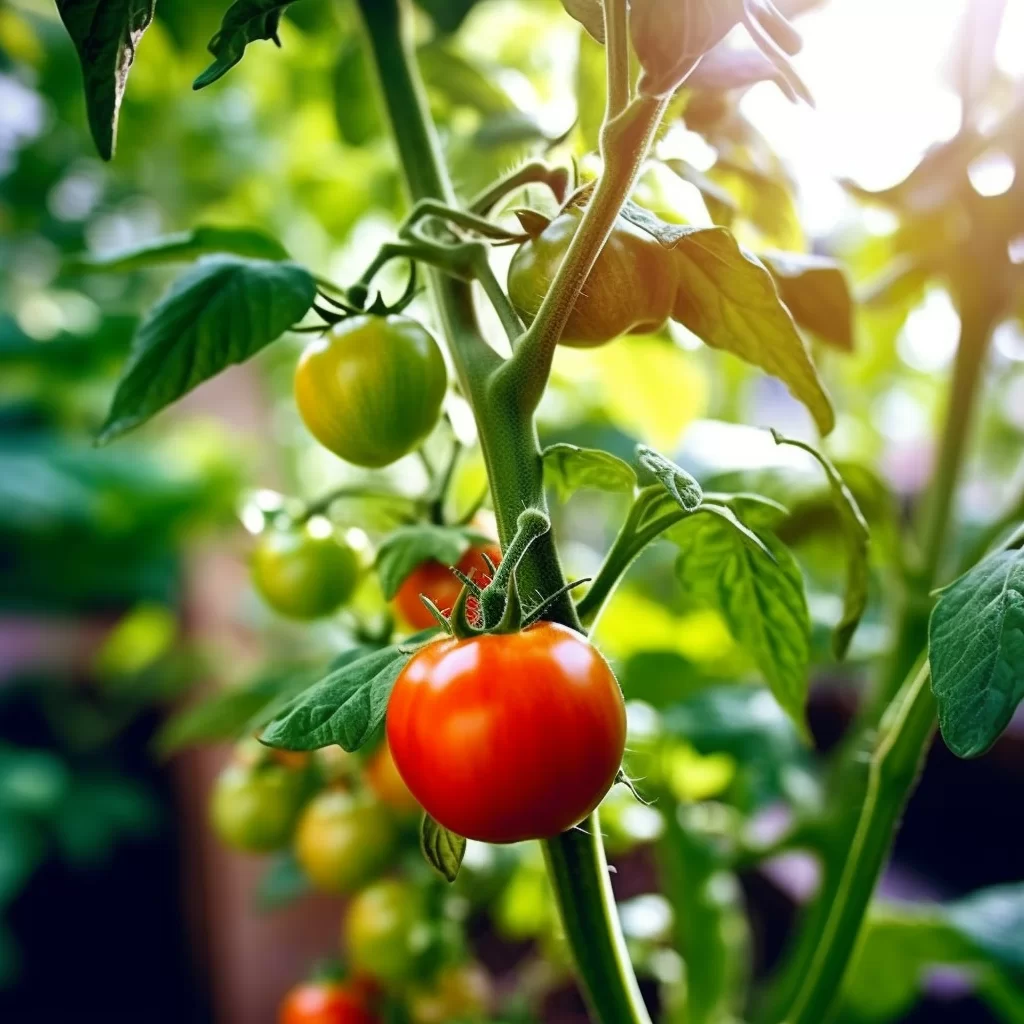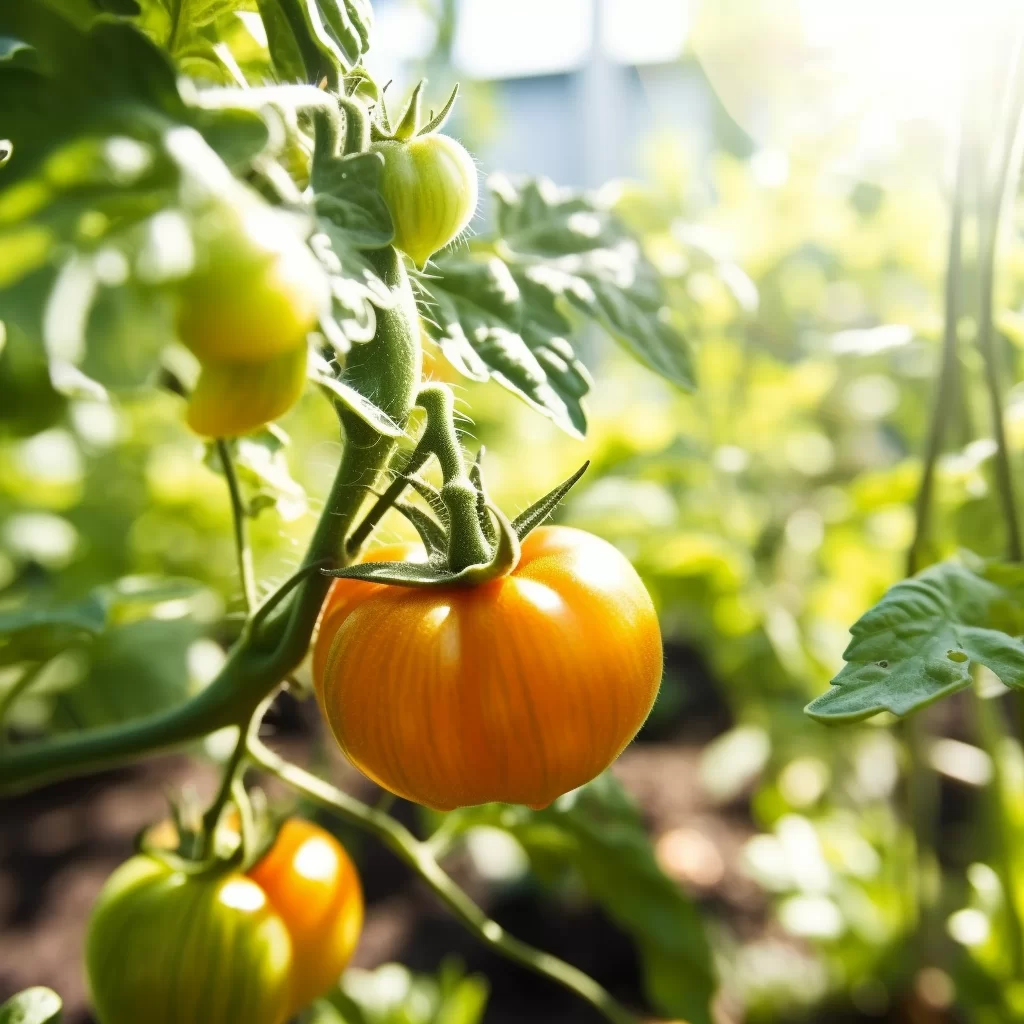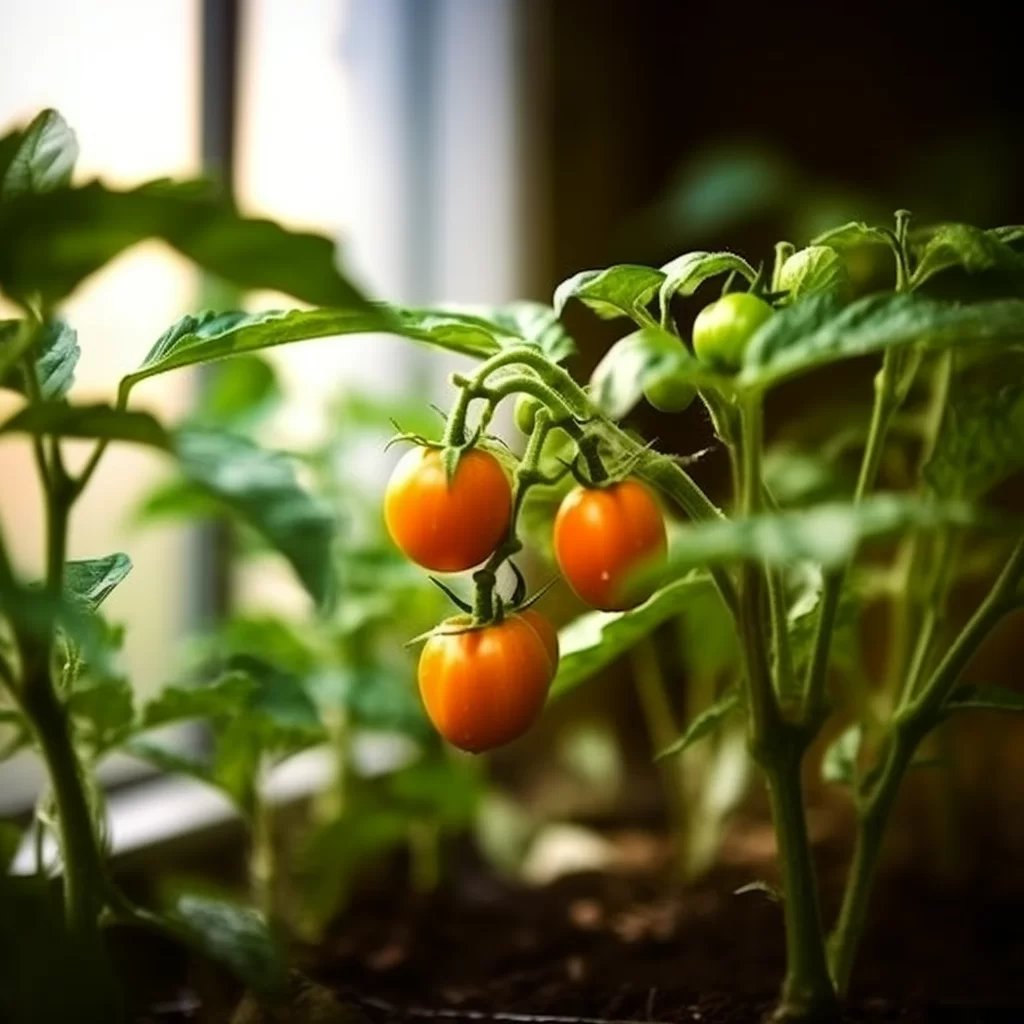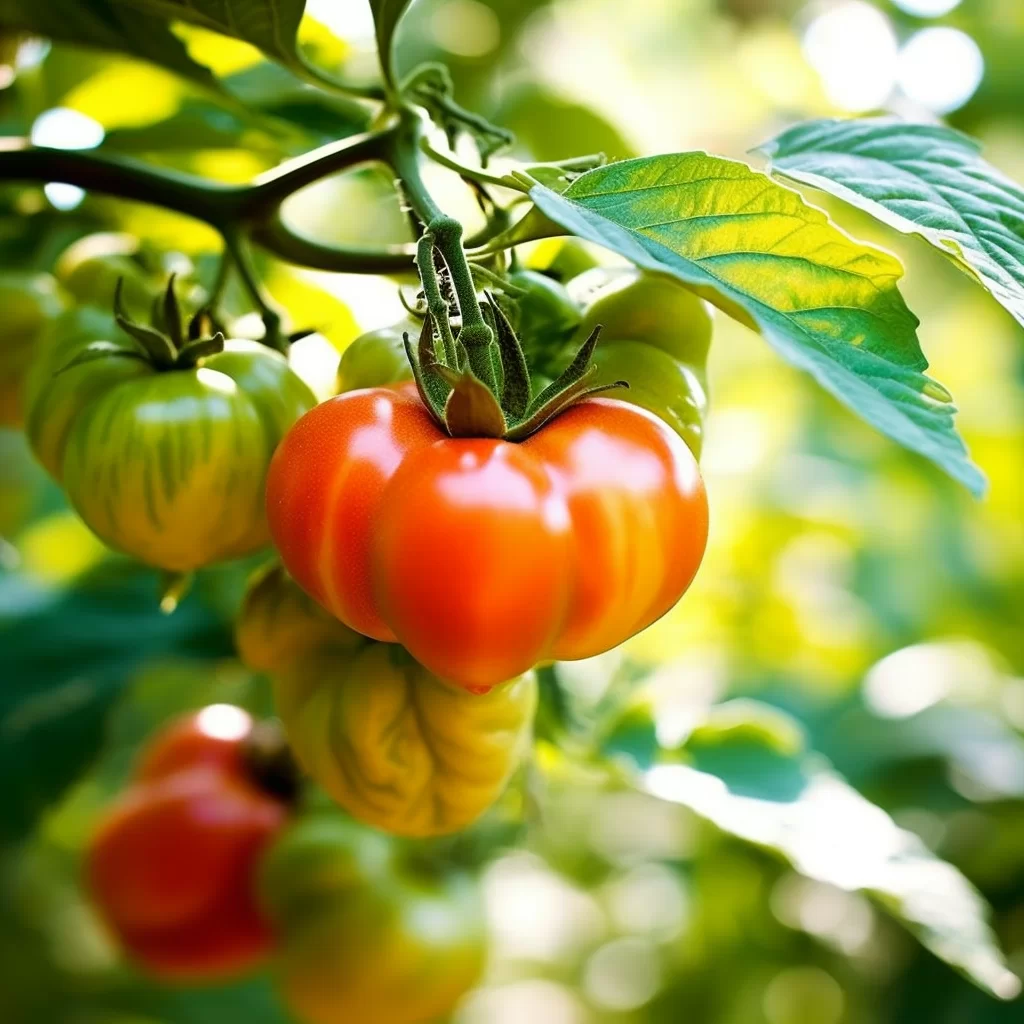Story of Day :
Contents
The Complete Guide to Beefsteak Tomato Plant Care: Tips and Tricks for a Bountiful Harvest
As a passionate gardener, you’ll agree that the flavor of freshly picked, succulent tomatoes from your own backyard is unparalleled.
Among the different varieties of tomatoes, beefsteak stands out as one of the most favored options.
The meaty texture and large size are ideal for slicing into sandwiches or adding to salads.
However, it can be challenging to cultivate these stunning beauties if you’re not familiar with their care requirements.
With this comprehensive guide on beefsteak tomato plant care, you’ll gain all the knowledge necessary to grow these delicious tomatoes and get a bountiful harvest.Growing beefsteak tomatoes involves several key factors such as soil preparation, watering techniques, pest control measures, pruning methods and plant support systems.
By following proper guidelines in all these areas through our guide’s aid, you can ensure successful cultivation with an abundance of ripe fruit on each vine.
Our step-by-step instructions will help beginner gardeners feel confident in nurturing their plants while experienced growers can still find valuable tips to improve their harvests’ quality and quantity further.
Whether growing them in pots or raised beds outdoors or inside under grow lights during winter months – with this guide’s help- growing juicy beefsteaks will become an easy feat!
Choosing Your Beefsteak Tomato Plants
If you want to grow juicy and delicious tomatoes at home, the first thing that you need to do is choose the right plants.
When it comes to beefsteak tomatoes, you have a plethora of options to choose from.
There are many different varieties available in the market that can help you achieve your desired results.
Some of the most popular options include Big Boy, Beefmaster, Brandywine, Cherokee Purple, Mortgage Lifter and Black Krim.
Each type has its unique qualities and taste profile that may suit different preferences. It is essential to note that selecting the right beefsteak tomato variety will depend on several factors such as your growing conditions, climate zone and tolerance for pests or diseases.
It is essential to note that selecting the right beefsteak tomato variety will depend on several factors such as your growing conditions, climate zone and tolerance for pests or diseases.
Therefore, it is crucial to research well before making a final decision about which one will work best for you.
With careful planning and consideration of these factors mentioned above along with adequate care practices like watering regularly and fertilizing appropriately – anyone can successfully grow a bountiful crop of delicious beefsteak tomatoes in their own backyard!
- Brandywine: An heirloom variety with large fruit and a sweet flavor.
- Cherokee Purple: Another heirloom option with deep purple fruit and a rich flavor.
- Burpee’s Big Boy: A hybrid variety known for its massive fruit and disease resistance.
When it comes to picking the right variety of plants, it is essential to consider their health over everything else.
No matter what type of plant you decide to go for, ensuring that they look healthy and free from any signs of pest damage or disease should be your top priority.
This will not only enhance the appearance of your garden but also guarantee that your plants can thrive and grow with ease.It is important to inspect plants before purchasing them as unhealthy-looking ones could pose a threat to other plants in your garden.
A sickly plant may infect others around it, causing an infestation that spreads throughout the entire area.
Therefore, by taking the time and effort to carefully select healthy-looking plants, you can avoid potential issues and enjoy a thriving garden throughout the year.

Planting Your Beefsteak Tomatoes
When it comes to planting your chosen greenery, there are a few helpful hints to keep in mind.
Firstly, make sure you have the appropriate tools and equipment on hand for the job, such as a shovel or trowel.
It’s also important to prepare your soil beforehand by removing any weeds or debris and adding fertilizer if necessary.
When placing your plants into the ground or container, be sure to give them enough space to grow and thrive – overcrowding can stunt their growth.
Finally, don’t forget to water them regularly and keep an eye out for any signs of pests or disease.In addition to these general tips, it’s worth researching specific care instructions for each type of plant you’ve selected.
Some may require more sunlight than others, while some may need a certain type of soil or special pruning techniques.
By educating yourself on the unique needs of each species in your garden or indoor space, you’ll be able to give them the best chance at flourishing and bringing joy into your life.
- Choose a sunny spot: Tomatoes need at least six hours of direct sunlight per day in order to thrive.
- Add compost or fertilizer: Beefsteak tomatoes are heavy feeders, so make sure to amend your soil with plenty of compost or a quality tomato fertilizer.
- Plant deep: Bury your tomato plants up to their first set of true leaves in order to encourage root growth and stability.
- Space them out: Make sure to give your beefsteaks plenty of room to grow – they can get quite large! Aim for at least two feet between plants.

Caring for Your Beefsteak Tomato Plants
When you have finally planted your beloved plants, it is crucial to maintain and nurture them.
A lack of proper care could lead to their untimely demise.
Fortunately, there are several essential tips that can help you ensure your plants remain healthy and vibrant.
One of the most significant things to remember is watering your plants regularly.
Every plant has different water requirements depending on its species, size, and location.
It’s recommended that you research each plant’s particular needs and follow those guidelines accordingly.Another vital aspect of taking care of your newly planted flora is fertilization.
Fertilizers provide nutrients that can enhance plant growth and resistance against pests/diseases while enriching the soil quality itself.
You should opt for organic fertilizers whenever possible since they’re eco-friendly and healthier for both humans and animals alike than inorganic ones.
Ultimately, it all boils down to being attentive towards your new botanical buddies’ needs by checking up on them frequently – a little bit goes a long way when it comes to caring for plants!
- Water regularly: Tomatoes need consistent moisture in order to produce juicy fruit.
Aim for about an inch of water per week, either from rainfall or irrigation.
- Mulch around the base: A layer of organic mulch (such as straw or shredded leaves) can help retain moisture and keep weed growth down around your plants.
- Sucker as needed: If you notice new growth sprouting from the base of your plant or between branches, these are called suckers.
Some gardeners choose to remove these in order to focus energy on fruit production.
- Stake or trellis your plants: Since beefsteak tomatoes can get quite heavy, it’s important to provide support so that stems don’t break under the weight.
Choose a method that works best for you – some options include cages, stakes, or trellises.

Troubleshooting Common Problems
Tomato growing can be a delightful experience, but despite your best efforts in care and maintenance, problems may still arise.
A few common issues that tomato growers face include blossom-end rot, blight, pests and poor fruit set.
Luckily, there are solutions available to tackle these problems head-on.Blossom-end rot is caused by a deficiency of calcium in the soil and shows up as black spots on the bottom of the tomato fruit.
One solution is to ensure there is enough calcium in the soil by adding Epsom salt or crushed eggshells before planting.
Blight, which manifests as yellowing leaves with brown spots that spread quickly throughout the plant can be prevented through crop rotation or using resistant varieties of tomatoes.
Pests like aphids or caterpillars can be kept at bay through natural methods such as neem oil spray or introducing beneficial insects like ladybugs into your garden.
Lastly, poor fruit set – where flowers fall off before turning into fruits – can be remedied with hand pollination using an electric toothbrush or simply shaking the plant gently to release pollen from one flower to another for successful fertilization.
By knowing these common problems and solutions associated with tomato growing, you’ll enjoy a bountiful harvest season without any stress!
Yellowing leaves: If you notice yellowing on the older leaves of your plant, this could be a sign of overwatering or nutrient deficiency.
Try scaling back on watering, and consider adding some additional fertilizer.
Blossom end rot: This is a common problem for beefsteak tomatoes, and it occurs when the bottom of the fruit turns black and mushy.
This is caused by inconsistent watering or a calcium deficiency in the soil.
Make sure to water regularly and consider adding some crushed eggshells or lime to your soil.
Pest damage: Tomato hornworms, aphids, and other pests can wreak havoc on your plants.
Consider using organic pest control methods such as neem oil spray or companion planting with herbs that repel insects (such as basil).
The Rewards of Growing Beefsteak Tomatoes
If you’re looking for a gratifying gardening experience and delicious produce, then growing beefsteak tomatoes is worth the extra effort.
While they may require more attention than other tomato varieties, the end result will be a juicy, flavorful tomato that you can proudly call your own.
Imagine biting into a freshly harvested, ripe red tomato and savoring its sweet taste.
And the best part? You can enjoy this treat in so many ways – adding it to sandwiches or salads, or using it as a base for sauces.The satisfaction of growing your own beefsteak tomatoes goes beyond just the taste – it’s also about knowing exactly where your food comes from and having control over what goes into it.
With proper care and attention to detail throughout the growing process, you’ll be rewarded with an abundant harvest that will last for weeks.
So why not try adding this variety to your garden? You won’t regret putting in the extra work when you get to enjoy such delicious rewards!
In Conclusion
Growing beefsteak tomato plants requires careful attention from selecting healthy plants before planting in well-prepared soil in sunny positions trellising support whilst pruning away suckers ensuring adequate hydration mulching according to conditions fertilizing controlling pests such as hornworms aphids etcetera while avoiding diseases such as blossom rot through adequate calcium supply; all these tips would ensure bountiful yields giving joy at harvesting homegrown fresh ripe juicy fruits!